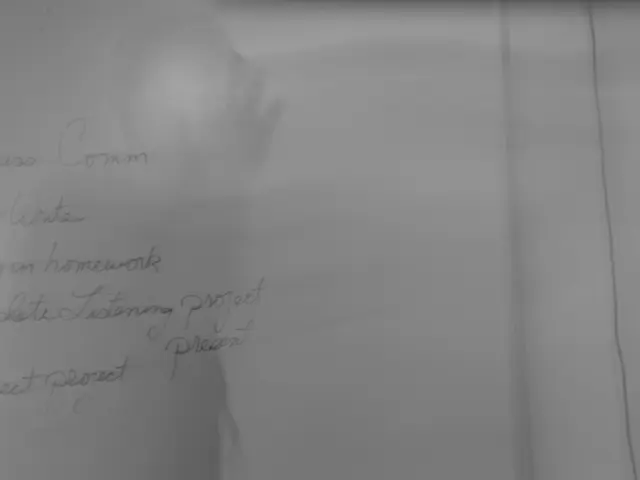Riding the Green Wave: Germany's Electrical Industry Boosts by Over a Tenth Despite Economy Woes
Electrical industry orders witness a surge of approximately ten percent. - Industry orders for electricity escalate by more than 10%
Let's dive into the buzzing world of Germany's electrical industry, a significant player in the country's vast industrial sectors. Despite the lingering shadow of an economic downturn, this key sector has managed to spark hope and leave some jaw-dropping numbers on the table.
In a groundbreaking leap, orders for the electrical industry skyrocketed by a whopping 11.6% year-on-year in March, as per the ZVEI, the Central Association of the Electrical and Digital Industry. Now, that's what you call making a statement!
You might be wondering, "What's driving this surge?" Well, we've got a couple of culprits up our sleeves. The domestic market has witnessed a wild explosion, with orders soaring by a staggering 21.2%, while the foreign market saw a more subdued yet respectable 5.1% increase.
Knowing the way things are going, it's not a huge surprise that revenue is on the rise. Businesses have been cranking out production at a rate of 20 billion euros in March—a solid 4.5% increase compared to the previous year. For the quarter, revenue dipped slightly to 54.1 billion euros, but hey, a small setback for a giant leap, am I right?
But don't mistake these numbers for a clear skies ahead scenario. The ZVEI had predicted a 2% decline in production for the year earlier. And as the erratic US trade policy, particularly Trump's tariffs, casts a lengthy shadow, business expectations have taken a nose dive. As the ZVEI's chief economist, Andreas Gontermann, put it, "It's Trump's tariff policy that's probably got them feeling pretty gloomy."
Germany's electrical industry has been working overtime in recent times, with around 886,000 employees stepping up to the plate. Sadly, last year saw a significant slide, with orders slipping by 9.6% compared to 2023, and production, adjusted for prices, dropping by 8.9%.
Now, let's delve into the factors driving the momentum of this green powerhouse.
Chopping Wind at the Turbines
First up on our list is Germany's renewable energy sector, particularly wind power and solar installations. The country's been setting new records when it comes to onshore wind power licenses, with April 2025 seeing a jaw-dropping 4 GW licensed in a single quarter—a nearly 40% increase year-on-year for that period.
Despite some temporary hiccups, like a drop in March installations from February, the country managed to add 3.2 GW of solar power capacity to start the year.
But all isn't sunshine and rainbows. Weather conditions can be a real game-changer when it comes to renewables, and 2025 has seen its fair share of weak winds, causing renewable electricity generation to take a hit and contribute only 47% of power consumption in Q1 2025.
Pounding the EV Accelerator
No conversation about Germany's electrical industry is complete without discussing electric vehicles (EVs). The country has been in the fast lane, with the number of battery electric vehicles (BEVs) and plug-in hybrids (PHEVs) skyrocketing. As of January 1, 2025, BEV and PHEV registrations stood at a staggering 3.35 million and 1.96 million, respectively.
It seems the EV fever has really caught on. In April 2025, BEV registrations saw an astounding 54% surge, reaching an impressive 18.8% market share. This marks a massive leap from the previous year.
And it's not just vehicles that are charging up. The EV charging infrastructure also saw a strong expansion in 2024, with 30,000 new charging points added, and 1.5 GW of additional charging power.
Economic Pressures and Mitigating Factors
As for the broader economic picture, overall new passenger car sales remained almost flat (-0.2% YoY), casting a gloomy outlook on traditional auto manufacturing and related electrical components.
But the electrical industry has some not-so-secret weapons up its sleeve. Government policies promoting clean energy and mobility help offset any potential reduction in industrial demand for electrical equipment and components.
Now, let's shed some light on the impact of Trump's tariffs. While recent data focuses on domestic growth drivers, historical tariffs had impacted the industry by raising input costs and affecting competitiveness, particularly in steel, aluminum, and industrial products.
However, the current trends emphasize growth areas like renewables and EVs, which provide a degree of buffer against external trade challenges.
So, as we turn the pages of this thrilling tale, we see that Germany's electrical industry is equipping itself to ride the green wave, buffeted by winds of change and charging into a brave new world of renewable energy and electric vehicles.
In light of Germany's streak of success in the electrical industry, it's worth exploring the factors driving the sector's growth. The proliferation of vocational training programs, as a key component of the community policy, is likely to reinforce the skilled workforce needed to meet the demands of the surging EV and renewable energy sectors. Despite concerns over tariffs and the impact of Trump's policies on steel, aluminum, and industrial products, the digital industry and finance sector are anticipated to play vital roles in funding business expansions and facilitating advancements in the targeted sectors. Moreover, as the industry struggles with the economic pressure from traditional auto manufacturing, government policies promoting clean energy and mobility, such as vocational training programs, are expected to mitigate any potential reduction in industrial demands for electrical equipment and components.







